
The late, great writer Ursula Le Guin believed that “We read books to find out who we are. What other people, real or imaginary, do and think and feel… is an essential guide to our understanding of what we ourselves are and may become.” I believe this, too, which is why I made a case in my last post for bringing interpretation back into classrooms, as the means through which we can reap reading’s ultimate benefit. But here’s the other thing about interpretation: In addition to helping us develop moral compasses, empathy, and self-awareness, I think academically interpretation also helps us analyze. In fact, I see interpretation as the too often unrecognized behind-the-scene work needed for real analysis.
Think about it for a moment: Interpretation involves putting pieces of a text together to construct an understanding of its deeper meaning. It’s an act of construction, while analysis, on the other hand, deconstructs by separating a whole into its component parts ostensibly to see how the parts affect the whole. But how can readers analyze the function of the parts if they don’t really have a vision of the whole?
 I suppose it’s possible to do this if both the whole and its parts are known or familiar, like the dog and its disassembled parts above. But as I wrote in Dynamic Teaching for Deeper Reading, readers who don’t have a vision of the whole beyond the gist can wind up like the blind men in the old Indian tale, who attempted to understand what an elephant was by analyzing a part of it. One man touched the trunk and thought an elephant was a snake; another felt the tail and concluded it was a rope; a third stroked the ear and thought an elephant was a fan. No one was able to make sense of the whole by analyzing a part.
I suppose it’s possible to do this if both the whole and its parts are known or familiar, like the dog and its disassembled parts above. But as I wrote in Dynamic Teaching for Deeper Reading, readers who don’t have a vision of the whole beyond the gist can wind up like the blind men in the old Indian tale, who attempted to understand what an elephant was by analyzing a part of it. One man touched the trunk and thought an elephant was a snake; another felt the tail and concluded it was a rope; a third stroked the ear and thought an elephant was a fan. No one was able to make sense of the whole by analyzing a part.
When you have a deeper vision of the whole, however, analysis can be far more insightful. The third graders I wrote about in my last post, for instance, who were reading The Old Woman Who Named Things, didn’t notice every detail or initially understand every word. But once they’d developed an interpretation that encapsulated the whole, they were able to go back to a passage like this and have lots to say about why the writer had decided to have the old woman read this particular book.

In this way, these students were analyzing without explicitly being taught to do so. No learning to use acronyms like RAFT or ACE or sentence starters and templates. Instead, their analysis was a natural out-growth of having meaningfully interpreted the text. And if you’re wondering if what I’m describing is actually analysis, just imagine this example reframed as a question on a standardized Common Core test: “How does this paragraph contribute to the author’s message (or the theme or the character’s development)?”
Questions like this form the bulk of both the multiple choice questions and short constructed responses that students encounter on the PARCC, Smarter Balance and New York State/Engage NY assessments. And in my work with teachers, I’ve been recommending that once students have been able to thoroughly discuss and interpret whatever texts they’ve read as inter-active read alouds, whole class novels, or book club books, you invite them to consider a few analysis questions that either you or the students themselves can create by combining one word or phrase from each column (like the Chinese restaurant menus of my childhood):

I keep finding new words to add to this chart, so it’s a work in progress. But one thing I know for sure is that while students might need to learn the meaning of and nuances between these verbs, they’ll be far more ready to answer these kinds questions if they’ve thought deeply and interpreted what they’ve read, rather than staying on the surface—or, as many students do, only start to think until they hit the questions. And interestingly enough, I’m not the only one who believes this.
 Last month, I came across a blog post by Timothy Shanahan called “If You Really Want Higher Test Scores: Rethink Reading Comprehension Instruction.” In the early days of the Common Core, Shanahan spent much time promoting the teaching of close reading by having students answer text-dependent questions over the course of three readings, the first to consider what the text says, the second how it says it, and the third what it means. More recently, however, he’s recognized that this has led many teachers to have a warped view of what it means to read. “Simply put,” he writes,
Last month, I came across a blog post by Timothy Shanahan called “If You Really Want Higher Test Scores: Rethink Reading Comprehension Instruction.” In the early days of the Common Core, Shanahan spent much time promoting the teaching of close reading by having students answer text-dependent questions over the course of three readings, the first to consider what the text says, the second how it says it, and the third what it means. More recently, however, he’s recognized that this has led many teachers to have a warped view of what it means to read. “Simply put,” he writes,
Reading is NOT the ability to answer certain kinds of questions about a text. . . Not knowledge, comprehension, analysis, synthesis or evaluation questions. Not “right there,” “think and search,” “author and me,” or “on my own” questions. Not main idea, detail, inference, structure or author’s tone questions.
[Instead] reading is the ability to make sense of the ideas expressed in a text [through] the ability to negotiate the linguistic and conceptual barriers of a text” (or what I call ‘the problems’ a given text poses). Students who can make sense of a text’s ideas will be able to answer any kind of question about that text. While students who fail to scale those linguistic and conceptual barriers”—i.e., to solve those problems—will struggle with the simplest of questions.
And how does he propose teaching kids to do this? Basically, once they’ve learned to decode, by teaching them how to interpret.
Of course, the title of the blog post suggests that Shanahan sees higher test scores as the end goal of interpreting, whereas I see them as the by-product of more authentic and meaningful work. But just think about it: If we provided students with lots of opportunities to interpret right from the start of the year—with time set aside to regularly practice and experience how to move from interpretation to analysis, we wouldn’t have to drive ourselves and our students crazy with test prep at this point in the year. So let’s trade in all those literary analysis sentence stems, acronyms and worksheets and focus on supporting student interpretations as the backbone of analysis.



 despite the fact that it was cheaper than McDonald’s Quarter Pounder and preferred in blind taste tests. Turns out the problem was that customers believed they were getting more beef for their money at McDonald’s, because they’d reasoned that one-fourth was greater than one-third since four was larger than three.
despite the fact that it was cheaper than McDonald’s Quarter Pounder and preferred in blind taste tests. Turns out the problem was that customers believed they were getting more beef for their money at McDonald’s, because they’d reasoned that one-fourth was greater than one-third since four was larger than three. i couldnt believe it the door opened in the middle of math class and the principal pushed this older raggedy kid in mrs cordell said boys and girls we have a new student in our class starting today his name is rufus fry now i know all of you will help make rufus feel welcome wont you someone giggled good rufus say hello to your new classmates please he didnt smile or wave or anything he just looked down and said real quiet hi a couple of girls thought he was cute because they said hi rufus why dont you sit next to kenny and he can help you catch up with what were doings mrs cordel said
i couldnt believe it the door opened in the middle of math class and the principal pushed this older raggedy kid in mrs cordell said boys and girls we have a new student in our class starting today his name is rufus fry now i know all of you will help make rufus feel welcome wont you someone giggled good rufus say hello to your new classmates please he didnt smile or wave or anything he just looked down and said real quiet hi a couple of girls thought he was cute because they said hi rufus why dont you sit next to kenny and he can help you catch up with what were doings mrs cordel said
 Like
Like  school students care far more about achieving good grades than they do about learning. This is truly unfortunate because the thing about learning and achievement is this: If we focus on deeper learning, achievement tends to happen as a natural by-product. So why would we choose the word achievement when learning supports application and retention and increases the likelihood of achievement?
school students care far more about achieving good grades than they do about learning. This is truly unfortunate because the thing about learning and achievement is this: If we focus on deeper learning, achievement tends to happen as a natural by-product. So why would we choose the word achievement when learning supports application and retention and increases the likelihood of achievement?
 As their titles suggest, these pieces took a hard look at the kind of questions and concerns teachers have been raising since the Standards first appeared. And while it’s great that the press is finally reporting on what students really face on these tests, it seems like they haven’t completely grasped that these exceedingly hard and often age-inappropriate texts and the convoluted, picayune questions that come with them are precisely what the authors of the Common Core had in mind.
As their titles suggest, these pieces took a hard look at the kind of questions and concerns teachers have been raising since the Standards first appeared. And while it’s great that the press is finally reporting on what students really face on these tests, it seems like they haven’t completely grasped that these exceedingly hard and often age-inappropriate texts and the convoluted, picayune questions that come with them are precisely what the authors of the Common Core had in mind. careers. And as many of us know by now, they determine a text’s complexity by supposedly using a three-part model that considers the following:
careers. And as many of us know by now, they determine a text’s complexity by supposedly using a three-part model that considers the following: the other two factors. And when it comes to the qualitative dimension, tests, packaged programs and even home-grown close reading lessons seem to favor texts that score high in terms of their language features and knowledge demands—i.e., texts with lots of hard vocabulary and references to things students might not know.
the other two factors. And when it comes to the qualitative dimension, tests, packaged programs and even home-grown close reading lessons seem to favor texts that score high in terms of their language features and knowledge demands—i.e., texts with lots of hard vocabulary and references to things students might not know. As I said last year at NCTE, the problem with this is that some children need so much support in order to read those required complex texts that we can barely see the student beneath all that scaffolding. In fact, when we adopt that “Do whatever it takes” approach to getting kids through those complex texts, we not only risk losing sight of them, but all that scaffolding inevitably limits the amount of thinking we’re letting students do. And in this way, I fear we’ve traded in complex thinking for getting through complex texts—and the ability to think complexly is surely as needed to succeed in college as possessing content knowledge and vocabulary.
As I said last year at NCTE, the problem with this is that some children need so much support in order to read those required complex texts that we can barely see the student beneath all that scaffolding. In fact, when we adopt that “Do whatever it takes” approach to getting kids through those complex texts, we not only risk losing sight of them, but all that scaffolding inevitably limits the amount of thinking we’re letting students do. And in this way, I fear we’ve traded in complex thinking for getting through complex texts—and the ability to think complexly is surely as needed to succeed in college as possessing content knowledge and vocabulary.




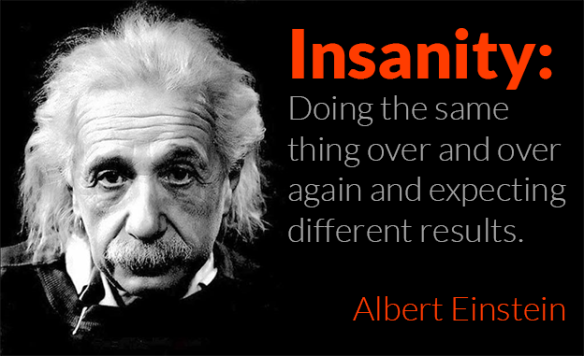

 Many writers, for instance, say it’s important to just get a draft down on paper because, as
Many writers, for instance, say it’s important to just get a draft down on paper because, as 



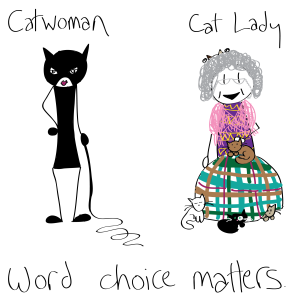





 commitment on the part of the teachers and schools to keep independent reading alive in classrooms—despite the fact that students who self-identify as readers who regularly read for pleasure consistently score higher on standardized tests than those who don’t, and they participate more in the civic life that’s needed for democracies to thrive. And as I’ve seen first hand, without that commitment from teachers and schools, independent reading vanishes within a shocking short period of time as students stop carrying books in their backpacks and don’t talk about them in the hall and fewer and fewer think of themselves as readers and libraries start looking forlorn.
commitment on the part of the teachers and schools to keep independent reading alive in classrooms—despite the fact that students who self-identify as readers who regularly read for pleasure consistently score higher on standardized tests than those who don’t, and they participate more in the civic life that’s needed for democracies to thrive. And as I’ve seen first hand, without that commitment from teachers and schools, independent reading vanishes within a shocking short period of time as students stop carrying books in their backpacks and don’t talk about them in the hall and fewer and fewer think of themselves as readers and libraries start looking forlorn.
 To me, all three seem to have strangely negative connotations. And in that, I’m not alone. Many educators have pointed out that, if we look up the word rigor in the dictionary, we find definitions that suggest something downright punishing. That’s why some educational writers, such as
To me, all three seem to have strangely negative connotations. And in that, I’m not alone. Many educators have pointed out that, if we look up the word rigor in the dictionary, we find definitions that suggest something downright punishing. That’s why some educational writers, such as  unpleasant, boring or even painful that someone else has said is good for you—like eating your vegetables or sitting through days and days of standardized testing. And as
unpleasant, boring or even painful that someone else has said is good for you—like eating your vegetables or sitting through days and days of standardized testing. And as 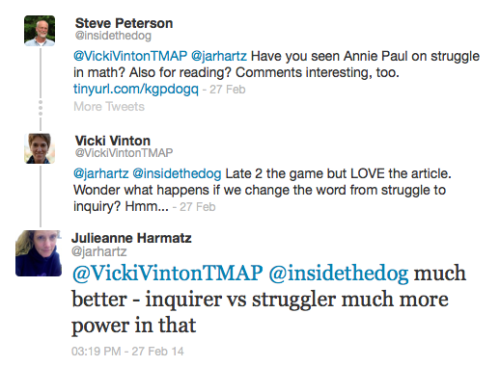
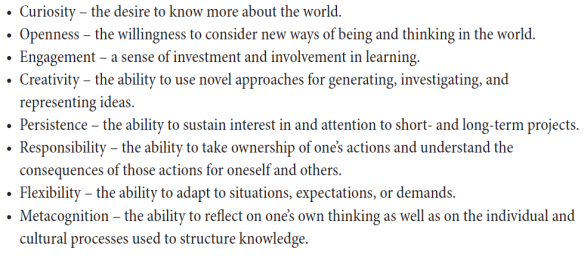
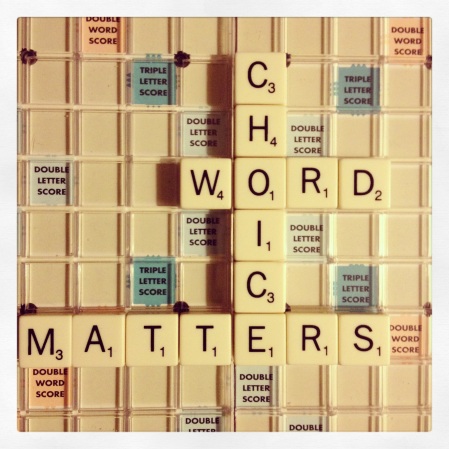

 Your task, should you choose to accept it, is not to focus on, say, how paragraph four develops the main character’s point of view or why the author used the word ‘choked’ in line six. Instead I ask you to do what the test-makers seem to consider Mission Impossible: to think about the meaning of the whole story, which will almost inevitably entail looking at the story through the eyes of the characters, the eyes of the author and ultimately your own eyes, as you consider what you think and feel about what you think the author might be trying to show us about people, the world, or life through the particulars of this story. And I invite you to do that by simply paying attention to what you notice in the text and what you make of that.
Your task, should you choose to accept it, is not to focus on, say, how paragraph four develops the main character’s point of view or why the author used the word ‘choked’ in line six. Instead I ask you to do what the test-makers seem to consider Mission Impossible: to think about the meaning of the whole story, which will almost inevitably entail looking at the story through the eyes of the characters, the eyes of the author and ultimately your own eyes, as you consider what you think and feel about what you think the author might be trying to show us about people, the world, or life through the particulars of this story. And I invite you to do that by simply paying attention to what you notice in the text and what you make of that.

 According to a recent Education Week blog post—whose title “
According to a recent Education Week blog post—whose title “
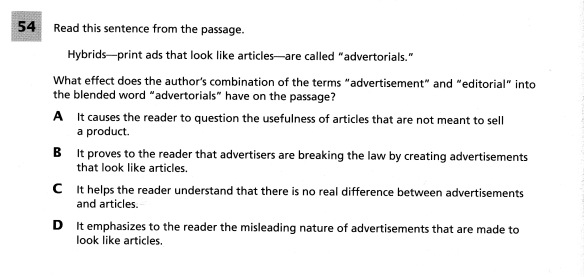






 moving on to become a principal, then a district superintendent, and the deputy chancellor for the DOE’s now defunct division of teaching and learning.
moving on to become a principal, then a district superintendent, and the deputy chancellor for the DOE’s now defunct division of teaching and learning. As ambassador, DiCamillo has said that her mission will be “to get as many kids and as many adults together reading as [she] can” because she believes that “stories connect us.” I have to believe than anyone reading this passionately believes that, too, and several new studies have come out recently that demonstrate the quantifiable benefits in reading stories. A New York Times article, for instance, called “
As ambassador, DiCamillo has said that her mission will be “to get as many kids and as many adults together reading as [she] can” because she believes that “stories connect us.” I have to believe than anyone reading this passionately believes that, too, and several new studies have come out recently that demonstrate the quantifiable benefits in reading stories. A New York Times article, for instance, called “ Finally, I spent much too much time over the break reading blog posts by fellow educators, many by the nominators and nominees of this years
Finally, I spent much too much time over the break reading blog posts by fellow educators, many by the nominators and nominees of this years 